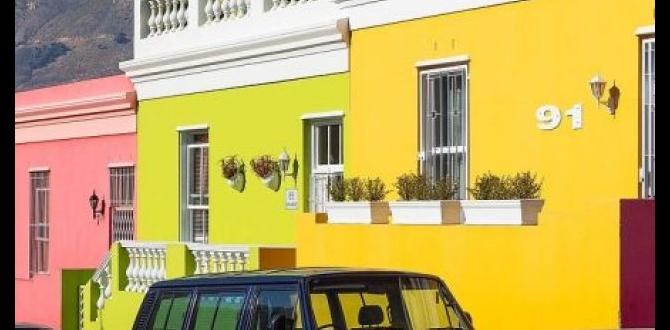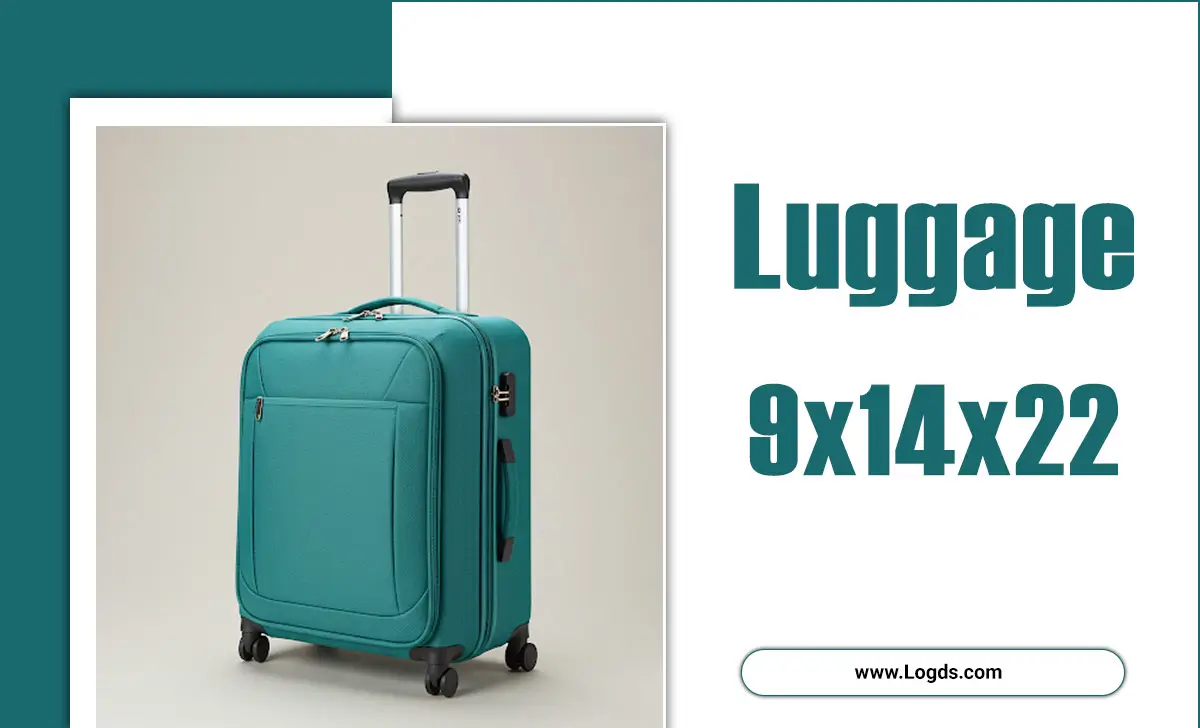This guide simplifies Brazil’s public transport for beginners. Discover how to use buses, metros, and ride-sharing services like a pro, ensuring comfortable and affordable travel across this vast country. Get ready for stress-free journeys!
Exploring Brazil is an adventure of a lifetime, but getting around can sometimes feel like a puzzle. From bustling city centers to remote wonders, understanding the local transport systems is key to a smooth trip. Don’t let worries about buses or tickets slow you down!
This guide is here to break down Brazil’s public transport options into simple, easy-to-digest steps. We’ll help you navigate like a local, saving you time and money, and ensuring your journey is as comfortable as possible. Get ready to discover the genius hacks that make traveling in Brazil a breeze!
Understanding Brazil’s Transport Landscape
Brazil is enormous, and its public transportation varies significantly between major cities and smaller towns. While the largest urban areas boast extensive networks, remote regions might rely more on local buses or require pre-booked taxis. The good news is that with a little preparation, you can confidently navigate most situations. We’ll cover the main ways people get around, from the daily commute to longer intercity travels.
Navigating Brazilian Cities: Mass Transit Heroes
Major Brazilian cities offer a range of public transport options designed to handle dense populations and keep traffic flowing. These systems are often the most affordable and efficient ways to explore urban areas.
The Ubiquitous Metro (Subway) System
Several large cities in Brazil have modern and efficient metro systems. If you’re in São Paulo, Rio de Janeiro, Belo Horizonte, Recife, or Porto Alegre, the metro is likely your best friend for getting around quickly.
How it Works: Metro lines are usually clearly marked with colors and station names. You’ll typically buy tickets or a reloadable card at station kiosks or vending machines.
Pros: Fast, avoids traffic, relatively safe, often air-conditioned.
Cons: Limited to specific routes and stations, can be crowded during peak hours.
City Buses: The Backbone of Urban Transport
Buses are the most widespread form of public transport touching almost every corner of Brazil. Every city, no matter how small, will have a bus system.
How it Works: Bus routes can be complex and signage might be primarily in Portuguese. It’s wise to use navigation apps like Google Maps or Moovit, which provide real-time bus information and route planning. You’ll usually pay the fare directly to the driver or a conductor (cobrador) as you board, or if you’re in cities with integrated payment systems, you might use a reloadable card.
Types of Buses:
Convencional: The standard local bus.
Executivo/Lotação: Often a bit more comfortable, sometimes with fewer stops, and might cost slightly more.
BRT (Bus Rapid Transit): Found in some cities (like Curitiba and Rio), these are dedicated bus lanes that move people faster, often with dedicated stations.
Pros: Extensive coverage, reaches almost everywhere, very affordable.
Cons: Can be slow due to traffic, routes can be confusing for non-Portuguese speakers, may not always be the most comfortable, especially on long journeys.
Tramways and VLT (Light Rail Vehicles)
Some cities are reviving or introducing light rail systems for a more modern, efficient urban transit experience. Rio de Janeiro’s VLT in the revitalized port area is a prime example, connecting key tourist spots and business districts.
How it Works: Similar to trams or metros, you purchase tickets at stations or via machines.
Pros: Modern, efficient, eco-friendly, often integrate well with other transport modes.
Cons: Limited to specific city areas.
Integrated Payment Cards: The Smart Way to Pay
Many larger cities have introduced smart card systems that allow you to pay for metro, buses, and sometimes even ferries with a single reloadable card. This is often cheaper than buying single tickets and much more convenient. Popular systems include:
Bilhete Único (São Paulo): Allows transfers between different bus lines and metro/trains within a certain time frame.
RioCard (Rio de Janeiro): Used for metro, trains, buses, and ferries.
Tip: Look for these cards at metro stations, lottery houses (casas lotéricas), or convenience stores. Many apps also help you manage and sometimes even top up these cards.
Intercity and Interstate Travel: Crossing Vast Distances
When you need to cover longer distances between cities and states in Brazil, several reliable options exist.
Long-Distance Buses (Ônibus Rodoviário)
This is the most common and often most practical way to travel between cities in Brazil. Bus stations (Rodoviária) are usually centrally located.
Classes of Service: Buses come in various comfort levels:
Convencional/Comum: Basic seating, fewest amenities.
Executivo: More comfortable reclining seats, air conditioning, and sometimes onboard entertainment.
Semi-Leito: Seats recline significantly for better sleep.
Leito (Sleeper): Seats recline almost flat, like a bed. Often includes blankets and pillows. This is the premium option for overnight journeys.
Booking Tickets: You can buy tickets at the bus station (Rodoviária) ticket counters, online through company websites, or via third-party booking platforms like Buson or ClickBus. Booking a few days in advance is recommended for popular routes or during peak seasons.
Pros: Extensive network covering most of the country, various comfort levels to suit your budget and travel time, affordable.
Cons: Can be time-consuming for very long distances, overnight buses can be tiring even in the Leito class.
Brazil’s Railways: A Nostalgic but Limited Option
Passenger rail in Brazil isn’t as extensive as in some other countries. However, a few scenic and important routes still operate.
Notable Routes:
The Serra Verde Express (Curitiba to Morretes/Paranaguá): A stunningly beautiful tourist route through the Atlantic Rainforest.
The Pantanal Railway (Campo Grande to Miranda): Offers access to the Pantanal wetlands.
Short-haul urban trains: Connect some suburbs to city centers (e.g., in São Paulo and Rio).
Booking: Tickets are usually purchased directly from the train operator’s website or at the station.
Pros: Scenic and comfortable on tourist routes, a unique travel experience.
Cons: Very limited network for general intercity travel.
Domestic Flights for Speed and Distance
For traversing Brazil’s vast distances quickly, domestic flights are essential. Major airlines like LATAM, GOL, and Azul operate extensive networks.
Booking: Book well in advance for the best fares on airline websites or through travel aggregators.
Pros: Fastest way to cover long distances, comfortable, competitive pricing if booked early.
Cons: Most expensive option, airport transfers add time and cost.
Ride-Sharing and Taxis: Convenience at Your Fingertips
In urban areas, ride-sharing apps and taxis provide convenient door-to-door service.
Ride-Sharing Apps (Uber, 99, and Cabs)
Apps like Uber and 99 (a popular Brazilian app) are widely available in most cities. They offer a convenient and often more affordable alternative to traditional taxis.
How it Works: Download the app, set up your account, and request a ride. The app shows you the estimated fare, driver’s location, and allows for cashless payment through your linked card or PayPal.
Pros: Convenient, transparent pricing, easy to book, cashless payment options, readily available in cities.
Cons: Prices can surge during peak times, availability might be limited in very remote areas.
Traditional Taxis
Taxis are also readily available, especially at airports, bus stations, and major hotels.
How it Works: Hail them on the street, find them at designated stands, or ask your hotel to call one. Ensure the meter (taxímetro) is turned on.
Pros: Accessible, drivers are usually knowledgeable about the city.
Cons: Can sometimes be more expensive than ride-sharing, potential for language barriers or overcharging if the meter isn’t used.
Tips for Stress-Free Travel in Brazil
Navigating a new country’s transport system can be daunting, but these practical tips will make your journey smoother.
Learn Basic Portuguese Phrases
Knowing a few key phrases can go a long way.
Where is…? (Onde fica…?)
How much is it? (Quanto custa?)
A ticket to… (Uma passagem para…)
Bus station (Rodoviária)
Metro station (Estação de metrô)
Thank you (Obrigado/Obrigada)
Download Helpful Apps
Google Maps or Waze: Essential for navigation, public transport routes, and real-time traffic.
Moovit: Excellent for real-time public transport schedules and route planning in many Brazilian cities.
Uber/99: For ride-sharing services.
* WhatsApp: Widely used for communication in Brazil.
Stay Aware of Your Surroundings
Like any major city worldwide, be mindful of your belongings, especially in crowded buses, metros, and stations. Keep valuables secure and avoid displaying them openly.
Carry Small Change for Fares
While many systems are embracing cashless payments, sometimes you’ll need cash for bus fares or small purchases. Having smaller denominations (Reais) will be helpful.
Plan Your Routes in Advance
Before heading out, especially for complex journeys or when using buses, check your route on an app. This minimizes confusion and helps you feel more confident.
Consider Your Luggage Needs
If you’re traveling with larger luggage, be aware that some buses might have limited overhead space, and bus stations can be busy. For longer journeys, consider traveling light or using luggage storage at your accommodation if possible.
For those who need extra security and comfort, especially on long travel days, considering travel solutions like disposable or reusable adult diapers can provide peace of mind. Similarly, parents traveling with children might find that having child diapers readily available for flights or bus trips is a travel essential. The focus is always on making your journey as comfortable and stress-free as possible.
Embrace the Journey
Brazilian public transport can sometimes be an adventure in itself. Be patient, stay calm, and enjoy the experience of interacting with local life as you travel.
A Quick Comparison of Transport Options
To help you decide the best mode of transport for your needs, here’s a handy comparison:
| Transport Mode | Best For | Typical Cost | Comfort Level | Speed | Coverage |
|---|---|---|---|---|---|
| Metro | Urban travel, avoiding traffic | Low | Good (Air-conditioned) | High | Major Cities (Limited Lines) |
| City Bus | Reaching most locations within a city | Very Low | Basic to Fair | Low to Medium (Traffic Dependent) | Extensive (All Cities) |
| BRT | Efficient urban travel on dedicated lanes | Low | Good | Medium to High | Select Cities |
| Long-Distance Bus | Intercity and Interstate travel | Low to Medium | Basic to Excellent (Leito) | Medium (Depends on distance) | Nationwide |
| Train | Scenic tourist routes, limited intercity | Medium | Good to Excellent | Medium | Very Limited |
| Domestic Flight | Long-distance travel, saving time | High | Excellent | Very High | Major Cities & Tourist Destinations |
| Ride-Sharing/Taxi | Door-to-door convenience, short distances | Medium to High | Good to Excellent | Medium (Traffic Dependent) | Urban Areas |
Frequently Asked Questions
What is the cheapest way to get around Brazil?
The cheapest ways to get around Brazil are by city bus for local travel within cities and by long-distance bus (ônibus rodoviário) for travel between cities. These options offer extensive coverage and very affordable fares.
Is public transport safe in Brazil?
Generally, public transport in major Brazilian cities is safe if you take standard precautions. Be aware of your surroundings, keep valuables secure and out of sight, and avoid traveling alone late at night on less crowded routes. Metro systems and well-lit bus terminals are usually the safest options.
Do I need to speak Portuguese to use public transport?
While it helps immensely, you don’t strictly need to speak fluent Portuguese. Many signs in major cities have English translations, especially in tourist areas. Using navigation apps like Google Maps or Moovit is crucial as they provide route information in English. Drivers and station staff are often accustomed to assisting tourists, so a phrasebook or translation app can also be very useful.
How do I pay for public transport in Brazil?
Payment methods vary. For buses, you often pay cash directly to the driver or cobrador upon boarding; having small denominations (Reais) is advisable. For metros and trains, you can buy single-journey tickets or reloadable smart cards at kiosks or machines. Ride-sharing apps are paid through the app using a linked credit card or PayPal. Integrated transport cards (like Bilhete Único or RioCard) are common in large cities and often offer cheaper transfers.
Are ride-sharing apps popular in Brazil?
Yes, ride-sharing apps like Uber and 99 are very popular and widely used in most major and many smaller cities across Brazil. They are often a convenient and cost-effective alternative to traditional taxis.
Can I take large luggage on Brazilian buses?
Yes, you can generally take large luggage on long-distance buses. There is usually a dedicated luggage compartment under the bus where your bags will be stowed. You’ll receive a ticket for your luggage, which you should keep safe. For city buses, however, space can be limited, so traveling with only a backpack or small luggage is recommended.
What is the difference between a Leito and a Semi-Leito bus?
A Leito bus offers the highest level of comfort for long-distance travel, with seats that recline almost completely flat, essentially turning into a bed. They often include amenities like blankets and pillows. A Semi-Leito bus offers significantly




